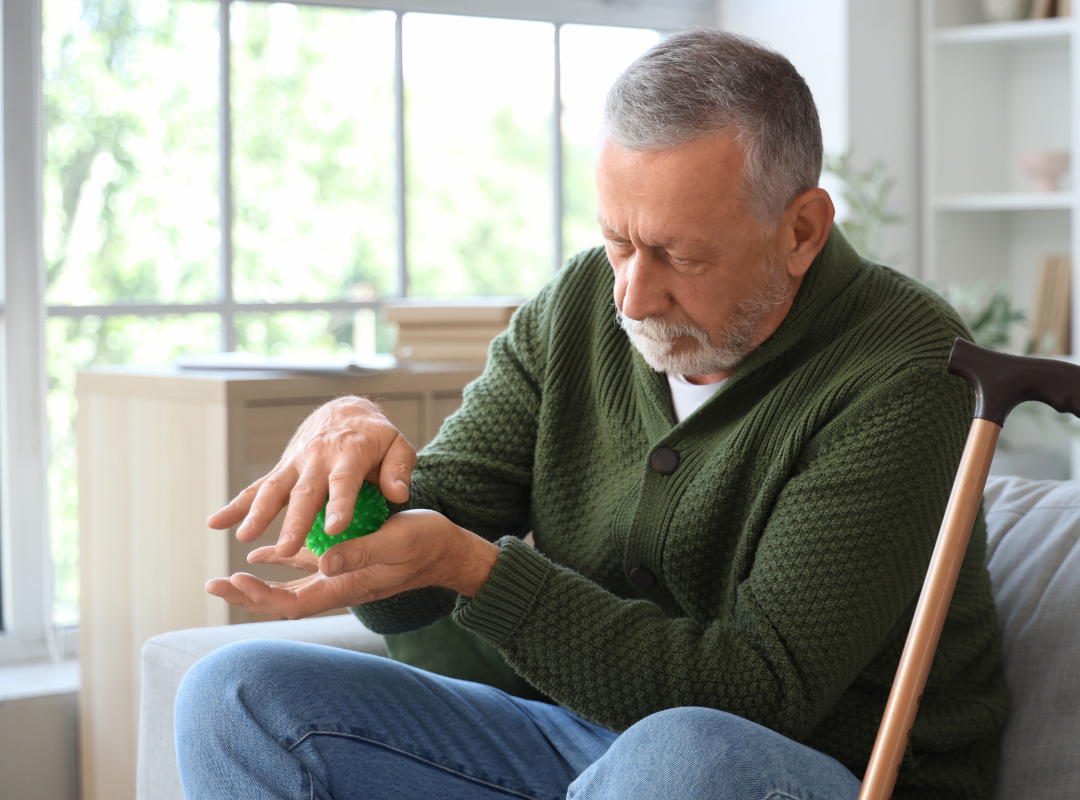Dealing with the stages of Parkinson’s disease can be overwhelming for individuals and their families. The symptoms and care needs evolve significantly over time, which makes it vital to prepare for each phase. Whether you’re just beginning to notice subtle tremors or managing the more complex care required in later stages, knowing what to expect can help you feel more in control.
At Shadowleaf at Estrella Gardens, we specialize in tailoring care to the individual and guiding families through the journey. From emotional support to physical therapy and memory care options, we’re here every step of the way to make daily life more manageable and meaningful.
What Are the 5 Stages of Parkinson’s Disease?
Understanding what are the 5 stages of Parkinson’s disease provides clarity for families and helps caregivers anticipate the support required at each level.
- Stage 1: Mild symptoms typically affect one side of the body. Tremors, changes in posture, and slight movement challenges may begin.
- Stage 2: Symptoms worsen and affect both sides. Daily tasks become more difficult.
- Stage 3: Balance is impacted. Falls become more likely, and mobility support is often needed.
- Stage 4: This stage requires significant assistance with daily activities.
- Stage 5: Often called the final stages of Parkinson’s, individuals may need 24/7 care and experience severe stiffness or may be bedridden.
Everyone experiences the disease differently, and knowing the Parkinson’s disease stages timeline can help families develop more compassionate and informed care plans.
Learn more from the Parkinson’s Foundation and the Michael J. Fox Foundation for deeper clinical insight.
Coping With the Early Stages of Parkinson’s
The early stages provide a crucial opportunity for intervention and adjustment. Families who learn to recognize signs early can delay disease progression and improve the individual’s quality of life.
Recognizing Early Signs
In Stage 1 and Stage 2, symptoms such as minor tremors, muscle rigidity, and bradykinesia (slowness of movement) may begin to appear. You might also notice changes in facial expressions or reduced arm swing when walking.
These early indicators are easy to miss but essential for early diagnosis. Check out the signs your parent might need support to stay alert to subtle behavioral changes that could signify deeper concerns.
Adjusting Daily Routines
Adapting your home and schedule to fit your needs in the early stages is empowering. Consider:
- Following structured mealtimes to aid digestion and routine
- Using assistive devices for writing or buttoning shirts
- Starting physical therapy or light exercise, such as yoga or tai chi
- Eating nutrient-rich meals and staying hydrated
These practical steps, along with maintaining good nutrition, can slow symptom progression and enhance day-to-day life.
Also consider creating a wellness-focused environment that supports independence and promotes cognitive stimulation.

Mid-Stage Strategies for Support and Independence
During Stages 3 and 4, motor symptoms become more severe, and support needs increase. This is when symptoms of stage 4 Parkinson’s disease become apparent, including limited mobility, increased fall risk, and difficulty with personal care tasks.
Medication Management and Exercise
- Review medications frequently with your neurologist to ensure optimal effectiveness.
- Participate in targeted strength and balance training to reduce fall risk.
- Use mobility aids like walkers or grab bars in bathrooms and stairways.
These proactive measures help preserve independence and delay further decline.
Using Respite and Support Services
As caregiving demands rise, senior respite care becomes essential. Short-term stays provide relief to caregivers while ensuring loved ones receive professional, attentive care.
You might also consider caregiver support groups or training programs like those offered by the Family Caregiver Alliance to gain tools and encouragement.
Support in the Final Stages of Parkinson’s
In Stage 5, or the final stages of Parkinson’s, round-the-clock care becomes necessary. Individuals may experience severe muscle stiffness, cognitive decline, and speech loss.
Daily Assistance
Support includes:
- Full assistance with bathing, dressing, and eating
- Medication schedules to manage pain and symptoms
- Mobility aids such as wheelchairs or transfer lifts
- Emotional support to manage feelings of frustration or isolation
Communication Tools
As verbal communication becomes more difficult, consider:
- Speech-generating apps
- Whiteboards or large-print flashcards
- Eye-tracking devices for non-verbal communication
These tools help maintain dignity and connection, even when speech is compromised.
Safety First
Safety is a primary concern in the advanced stages. Consider:
- Grab bars and non-slip mats in bathrooms
- Adjustable beds to aid transfers
- Lighting upgrades to reduce falls
- Emergency alert systems for immediate help
Making these safety modifications not only protects your loved one but also reduces caregiver stress.
Monitoring Non-Motor Symptoms Throughout All Stages
While Parkinson’s is known for its motor symptoms, non-motor symptoms like depression, sleep issues, memory loss, and digestive issues can appear long before physical signs.
Staying alert to these lesser-known signs enables faster intervention and improves overall treatment outcomes. Emotional changes and cognitive shifts may be some of the most distressing for families—but knowing what to expect helps you prepare compassionately.
For additional guidance, visit Recognizing mental health issues in seniors.
Resources for Families and Caregivers
You’re not alone in this. Plenty of resources can support you and your loved one during each stage of Parkinson’s disease.
- National Parkinson Foundation – Offers webinars, guides, and support groups.
- Michael J. Fox Foundation – Excellent for the latest research and funding opportunities.
- Shadowleaf at Estrella Gardens – Our team is here to provide personalized care planning.
- Caregiver.org – Offers training and stress management resources for caregivers.
With the right guidance, even the most difficult stages become more manageable.
Move Forward With Confidence and Support
No one is ever fully prepared for the journey through the stages of Parkinson’s disease, but with the right resources, care strategies, and emotional support, it’s possible to create a life filled with meaning and dignity.
At Shadowleaf at Estrella Gardens, we partner with families to provide compassionate care through every phase—from mild symptoms to the final stages of Parkinson’s. Let us help you build a plan that’s not just reactive but empowering.
📞 Call us at 702-577-2637 or schedule a tour today to see how we can support your family’s journey with Parkinson’s.
Frequently Asked Questions
What is the life expectancy of a person with Parkinson’s disease?
The life expectancy of someone with Parkinson’s disease can vary widely depending on age at diagnosis, overall health, and how the disease progresses. Many people live 10–20 years or more after diagnosis, especially with proper medical care and lifestyle adjustments. Advances in treatment and symptom management have greatly improved the quality of life and longevity. While Parkinson’s itself isn’t usually fatal, complications such as falls or infections can affect life expectancy.
How long does it take to go from stage 1 to stage 4 Parkinson’s?
The progression from stage 1 to stage 4 Parkinson’s disease is different for each individual. On average, it may take anywhere from 10 to 20 years, though some people experience faster or slower progression. Factors such as age, overall health, and response to treatment play a role. Regular medical checkups and early management can help slow the advancement and improve daily functioning.
How to slow down Parkinson’s?
While there is no cure for Parkinson’s, several strategies can help slow its progression. Regular exercise, especially activities that improve balance and flexibility, has been shown to be highly beneficial. A healthy diet rich in antioxidants and consistent medical treatment also supports better outcomes. In addition, therapies like physical, occupational, and speech therapy can help maintain independence for longer.
What is the life expectancy of someone with Parkinson’s plus?
Parkinson’s plus syndromes, such as Multiple System Atrophy (MSA) or Progressive Supranuclear Palsy (PSP), tend to progress more quickly than Parkinson’s disease. Life expectancy is often shorter, typically ranging from 6 to 10 years after diagnosis. Symptoms are usually more severe and less responsive to standard Parkinson’s medications. Early and consistent medical support, along with lifestyle adaptations, can still improve quality of life.

